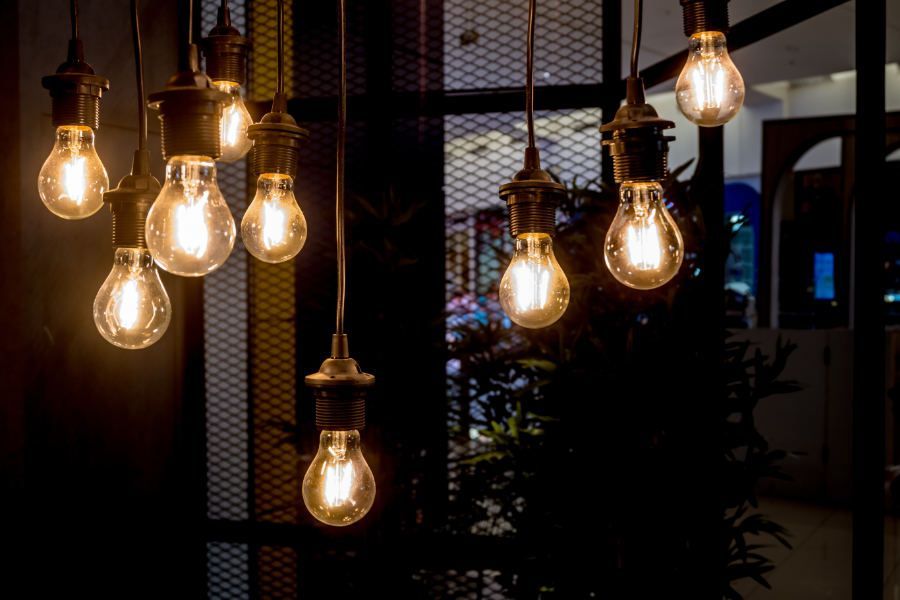How to Make Your Rental Safer for Tenants who Decorate with Lights?
Safety Is Always A Primary Concern For Your Rental Property

The holidays are around the corner and many tenants like to decorate with lights, whether projectors shining designs onto the home, or more traditional holiday lights. Although not every tenant is looking to make their decorations be as festive as possible, it's best practice to maintain safety for those who will.
Below are some tips, upgrades and safety features you can provide your tenant to make their holiday season a bit safer when decorating.
Safety
It's a good idea to remember that not every tenant is a handyman, and many of them may not understand the risks involved with electricity outdoors. Every year there are countless accidents from people falling off ladders hanging holiday lights to accidently stepping on a Christmas tree ornament. By making sure outlets are safe and accessible without the need of ladders you can reduce your tenants risk of injury.
Exterior Outlets
You can't have lights without electricity. Providing exterior outlets to the home in easy to reach locations can reduce the usage of extension cords, extension cords can pose some risks as the more wire is used the more chances of damage can take place. Additionally extension cords are rarely used properly. A 16-gauge extension cord is most commonly used when powering on outdoor lights; however, it should only be used if the lights length is under 25 feet. For anything over 25 feet you would require a heavier duty 14- gauge extension cord. Moreover when multiple extension cords are used, it can cause them to overheat and potentially cause a fire.
The ideal outlets should not only be outdoor rated but also have a ground fault circuit interrupter (GFCI). In fact, according to the California electrical code, every outdoor outlet needs to be protected by a GFCI. What a GFCI does is protect people from electric shocks by detecting ground faults which is typically caused when someone begins to receive a shock. GFCI’s are often installed outdoors or where water can make contact with the outlets such as in bathrooms and kitchens.
Weather Protected Boxes
When installing outlets outdoors you’re not only required to have the be GFCI protected, but the outlets also need to be protected from the weather. Outdoor covers come in a variety of options including individual self-closing covers like Commercial Electric’s weatherproof outlet cover to large plastic domes like TAYMAC’s Polycarbonate clear covers which can protect connections from weather even when plugged in.
When doing electrical upgrades, you can add additional outdoor boxes on the property's landscape, gardens or fencing to allow for rope lights or other lighting fixtures to give your Long Beach rental property a warm inviting atmosphere after the sun sets.
Mounting Points
Although many tenants may not notice these at first, if they ever decide to hang lights for the holidays or for decoration, having mounting points around the rental property will be appreciated. By providing mounting points such as hooks around the perimeter of the exterior walls, you may also be preventing damage caused by your tenant. If they want to add lights themselves they’ll need to mount them to something and a careless tenant can damage exterior walls if not using proper tools and techniques to mount them. Having mounting also reduces the amount of time a tenant would be on a ladder, which can reduce the chance of them falling and injuring themselves.
Additional hooks or loops to hang rope or string lights around porches, patios, and outdoor living spaces can also help them decorate if they so choose. Happy tenants tend to be long term tenants, and a gesture as small as a few hooks around the property can satisfy the tenant's need to decorate for the holidays.
With the holidays quickly approaching, many people are looking to decorate with lights. By reducing your tenant’s risk of injury and making decorating simpler for them you’ll be closer to having a happy long term tenant. If you need help finding trusty electricians to install outdoor outlet or if you’re looking for a high quality
full service property management company and you require more information on the services they provide call us at (562) 888-0247 or feel free to fill out our
free rental analysis to see what your rental could yield today.





